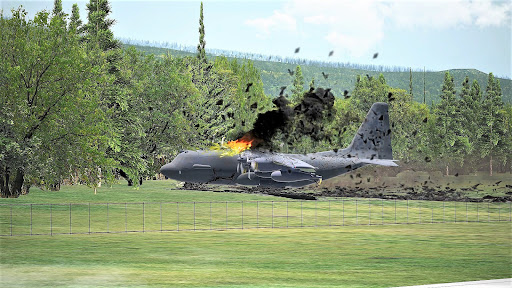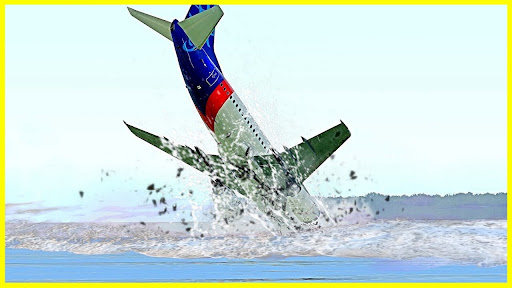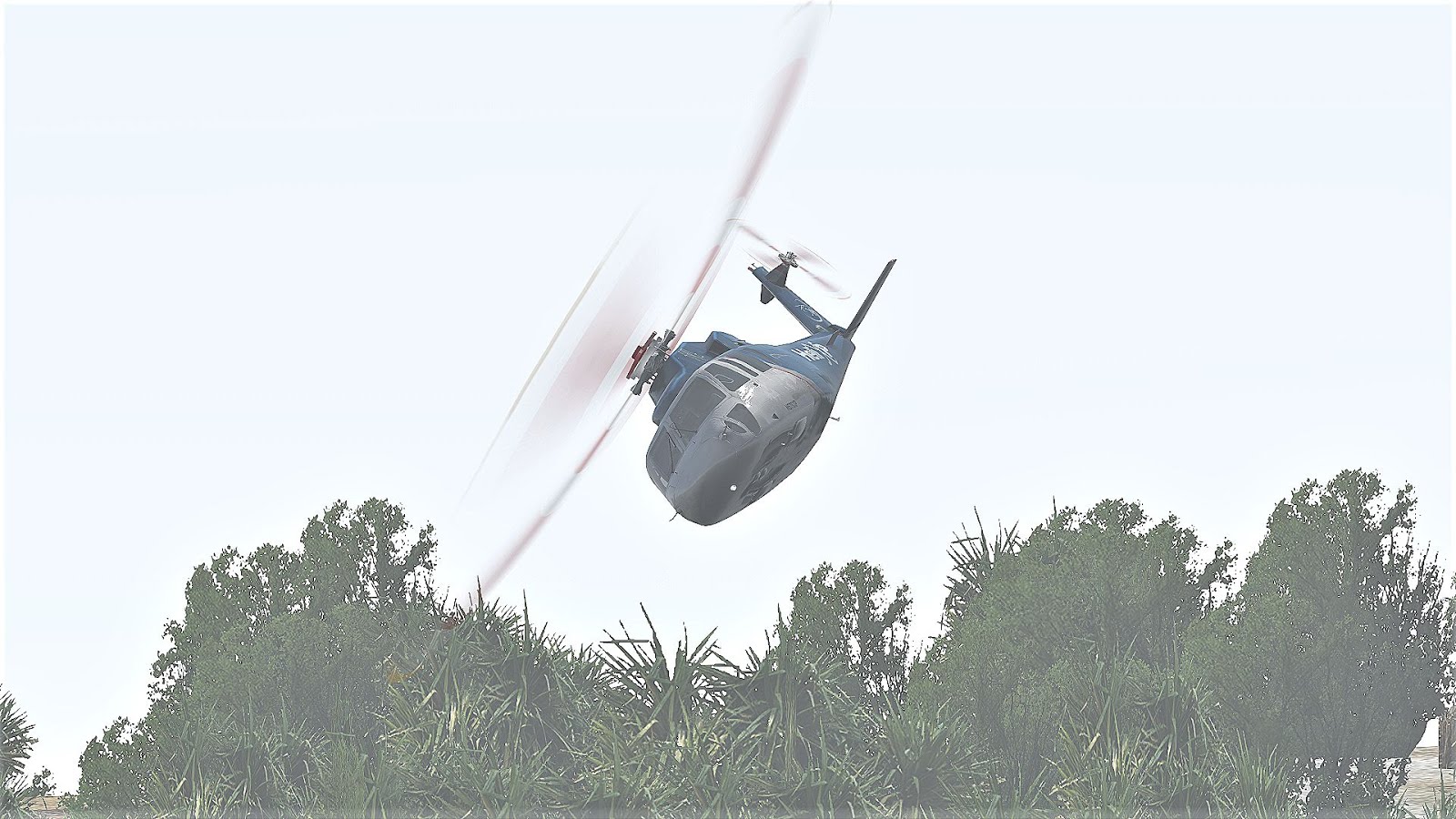- Ukraine International Airlines Flight 752 -
Ukraine International Airlines Flight 752 (PS752) was a scheduled international passenger flight from Tehran to Kiev operated by Ukraine International Airlines (UIA). On 8 January 2020, the Boeing 737-800 operating the route was shot down shortly after takeoff from Tehran Imam Khomeini International Airport. All 176 passengers and crew were killed; it was the first fatal air accident involving Ukraine International Airlines.
The airplane was shot down by the Islamic Revolutionary Guard Corps (IRGC), which attributed it to human error, with Iranian president Hassan Rouhani describing the accident as an "unforgivable mistake". Iranian aviation authorities initially denied the airplane was hit by a missile and said a technical error was responsible, while Ukrainian authorities, after initially deferring to Iran's explanation, said a shoot-down of the flight was one of their main working theories. Investigation by Western intelligence agencies and the general public revealed that the aircraft was shot down by a Tor-M1 surface-to-air missile launched by Iran. Three days later, on 11 January, the IRGC admitted their responsibility for downing the aircraft, firing two surface-to-air missiles at it, having mistaken it for a cruise missile.
The incident occurred during the 2019–20 Persian Gulf crisis, at a time of heightened tensions five days after U.S. president Donald Trump launched a drone strike killing Iranian major general Qasem Soleimani in Iraq in retaliation for the breaching of the U.S. embassy in Baghdad by Iranian militia group Kata'ib Hezbollah and their supporters and hours after Iran's retaliatory ballistic missile attacks. It was preceded by an order from the U.S. Federal Aviation Administration (FAA) that all American civilian aircraft avoid Iranian airspace and was followed by similar orders by several other nations and airlines including Ukraine.
Experts have questioned Iran's decision to not close its airspace after launching missiles; General Amir Ali Hajizadeh said a request had been made for a no-fly zone before the incident but this request was rejected. Later, The New York Times reported that Iranian officials feared shutting down the airport would create mass panic that war with the United States was imminent, and they also hoped the presence of passenger jets could act as a deterrent against an American attack on the airport or the nearby military base, "effectively turning planeloads of unsuspecting travelers into human shields."
As a result of the aircraft shootdown and government deception, mass protests broke out in Iran calling for the removal of Supreme Leader Ali Khamenei. A Khamenei representative in the elite Revolutionary Guards, told a gathering of Khamenei’s representatives in Iranian universities that the Assembly of Experts, the clerical body that chose Khamenei, “... do not appoint the Supreme Leader, rather they discover him In the Islamic system, the office and the legitimacy of the Supreme Leader comes from God, the Prophet and the Shi’ite Imams".
Aircraft
The aircraft was a Boeing 737-8KV, serial number 38124, registration UR-PSR. It was three and a half years old at the time of it being shot down, having first flown on 21 June 2016. It was delivered to the airline on 19 July 2016 and was the first 737 Next Generation aircraft purchased by the airline. The airline defended the airplane's maintenance record, saying it had been inspected just two days before the crash.
Flight and Crash
Flight 752 was scheduled to take off at 05:15 local time (UTC+3:30), but was delayed. It departed Stand 116 and took off from Runway 29R at 06:12:08 local time and was expected to land in Kiev at 08:00 local time (UTC+2:00). The final ADS-B data received was at 06:14:57, less than three minutes after departure.
Between 06:14:17 and 06:14:45 the airplane turned from the take-off heading of 289° to heading 313°, following its regular route.
According to the data, the last recorded altitude was at 2,416 metres (7,925 ft) above mean sea level with a ground speed of 275 knots (509 km/h; 316 mph). The airport is 1,007 metres (3,305 ft) above mean sea level, but the ground around Parand and the crash site is several hundred feet higher. The flight was climbing at just under 3000 ft/min when the flight data record abruptly ended over the open ground near the northern end of Enqelab Eslami Boulevard in Parand. Analysis of several videos by the New York Times shows that the aircraft was hit almost immediately by the first of two short-range missiles (which knocked out its transponder) launched thirty seconds apart by the Islamic Revolutionary Guard Corps, and with the aircraft having maintained its track, by the second missile some 23 seconds later, after which it veers right and can be seen aflame before disappearing from view. Ukrainian investigators believe the pilots were killed instantly by shrapnel from the missile which exploded near the cockpit.
The precise track of the aircraft is unclear from that point until about a minute before it crashed, when several videos recorded its last seconds. The aircraft crashed on a park and fields on the edge of the village of Khalajabad 15 kilometres (9.3 mi; 8.1 nmi) north-west of the airport, and about 10 miles (16 km; 8.7 nmi) ENE of the last missile strike about seven minutes after takeoff, but did not cause any casualties on the ground.
Shortly after the crash, emergency responders arrived with 22 ambulances, four bus ambulances, and a helicopter, but intense fires prevented a rescue attempt. The wreckage was strewn over a wide area, with no survivors found at the crash site. The aircraft was completely destroyed on impact.
Passengers and Crew
According to Ukrainian foreign minister Vadym Prystaiko and a flight manifest released by UIA, out of the 167 passengers' citizenship, 82 were confirmed to be Iranian, 63 were Canadian, three were British, four were Afghan, 10 were Swedish, and three were German. Eleven Ukrainians were also onboard, nine of them being the crew. The German Foreign Ministry denied any Germans were aboard; the three people in question were Afghan nationals who lived in Germany as asylum seekers. According to Iranian nationality law, the Iranian government considers dual citizens as Iranian citizens only.
Of the 167 passengers, 138 were travelling to Canada via Ukraine. Many of the Iranian Canadians were affiliated with Canadian universities, as students or academics who had travelled to Iran during Christmas break. The crash was the largest loss of Canadian lives in aviation since the 1985 bombing of Air India Flight 182. On January 15, 2020, Canadian Transport Minister Marc Garneau said 57 Canadians died in the crash.
In addition to six flight attendants, the crew consisted of Captain Volodymyr Gaponenko (11,600 hours on Boeing 737 aircraft, including 5,500 hours as captain), instructor pilot Oleksiy Naumkin (12,000 hours on Boeing 737, including 6,600 as captain), and first officer Serhiy Khomenko (7,600 hours on Boeing 737).
Investigation
A Ukrainian Air Force Ilyushin Il-76 prepares to depart for Iran from the Boryspil International Airport with specialists from the National Bureau of Investigation of Civil Aviation and Incidents with the Civil Aviation Service, State Aviation Service, Ukraine International Airlines and from the General Inspectorate of the Ministry of Defense of Ukraine.
Under standard International Civil Aviation Organization (IACO) rules, according to Annex 13 of the Chicago Convention, the United States National Transportation Safety Board (NTSB) would participate in the investigation, as they represented the state of the manufacturer of the aircraft. France's Bureau d'Enquêtes et d'Analyses pour la Sécurité de l'Aviation Civile (BEA) would participate as representatives of the state of manufacture of the aircraft's engines (a U.S.–France joint venture) and Ukraine's Ministry of Infrastructure would participate as representatives of the state in which the aircraft was registered. Given the 2019–20 Persian Gulf crisis, it is not known how these organizations would be involved, although it was reported that Iran had said American, French and Ukrainian authorities would be involved.
The head of the commission for accidents in the Iran CAO said they received no emergency message from the aircraft before the crash. It was reported that the aircraft's black boxes (the cockpit voice recorder (CVR) and flight data recorder (FDR)) had been recovered, but Iran CAO said it was not clear to which country the recorders would be sent so the data could be analyzed. The association said it would not hand over the black boxes to Boeing or to U.S. authorities. On 9 January, the black boxes were reported, by Iranian investigators, to have been damaged and that some parts of their memory may have been lost. Mary Schiavo, a former U.S. Department of Transportation inspector general, said no automated distress messages had been sent from the aircraft or by its crew.
On 9 January, the Swedish Accident Investigation Authority and Transportation Safety Board of Canada (TSB) were officially invited by the investigation team to participate in the probe on the crash. The NTSB, Ukraine, and Boeing were also invited to participate in the investigation. Due to American economic sanctions placed on Iran, U.S. investigators would need a special licence from the Treasury and the State Departments to travel there.
On 9 January, media reports showed bulldozers being used to clear the crash site. Some aircraft investigation experts expressed concerns about disturbing and damaging the crash site before a thorough investigation can be conducted. Iran denied bulldozing the evidence. On 10 January, the Iranian government granted Ukrainian investigators permission to investigate the flight recorders and Ukrainian investigators visited the crash site, with plans to download the recorders in Tehran. On 14 January, the head of the TSB, Kathy Fox, said there were signs that Iran would allow the TSB to participate in the downloading and analysis of data from the airplane's flight data recorder and cockpit voice recorder. On 23 January, the TSB announced that they had been invited by Iran to help with the flight recorders.
On 3 February, Iran ceased co-operation with Ukraine in its investigation into the disaster due to a leaked recording about the crash shown on Ukrainian TV. Though Iran resumed co-operation on 15 February.
Cause Of The Crash
Wreckage of Flight 752
On 8 January, Iran's Road and Transportation Ministry released a statement that the aircraft burst into flames after a fire started in one of its engines, causing the pilot to lose control and crash into the ground. The airline opined that pilot error was impossible to be cited as the cause of the crash as the pilots had exclusively been trained for the Tehran flights for years, noting that Tehran Airport was "not a simple airport".
Iranian and Ukrainian government sources initially blamed mechanical issues aboard the aircraft for its crash. The Ukrainian government later retracted its statement and said anything was possible, refusing to rule out that the aircraft was hit by a missile. President Zelensky said there should not be any speculation about the cause of the crash.
On 9 January, U.S. intelligence and defence officials said they believed the aircraft had been shot down by an Iranian Tor missile (NATO reporting name SA-15 "Gauntlet"), based on evidence from reconnaissance satellite imagery and radar data. Ukrainian authorities said a shootdown was one of the "main working theories", while Iranian authorities denied this, stating that allegations of a missile hit were "psychological warfare". British defence officials agreed with the American assessment of a shootdown. mPrime Minister of Canada Justin Trudeau said evidence from multiple sources, including Canadian intelligence, suggest the aircraft was shot down by an Iranian missile.
After three days of describing it as "an American lie", "a wrongful scenario by CIA and the Pentagon", and "an attempt to prevent Boeing stock from a free fall", on 11 January, the Armed Forces of the Islamic Republic of Iran admitted they had shot down the airplane, having erroneously identified it as a hostile target.
The flight had been delayed by more than an hour because the captain had decided to offload some luggage because the aircraft was over its certified takeoff weight.
According to an early IRGC statement, when the airplane seemed to head toward a "sensitive military centre" of the Islamic Revolutionary Guard Corps, controllers mistook it for a "hostile target" and shot it down. Iran's Civil Aviation Organization disputed this timeline, arguing that the airplane was on the correct course all the time and there was no proven flight deviation. The Iranian CAO's viewpoint was also supported by a Radio Canada International article that used public ADS-B flight tracking data.
Iranian Brigadier general Amir Ali Hajizadeh of the IRGC Aerospace Defense said a missile operator in Bidganeh had acted independently, mistook the airplane for a U.S. cruise missile and shot it down. Hajizadeh also said the airplane was on-track and "made no mistake".
Western experts had previously noted that Flight 752 was flying near several sensitive Iranian ballistic missile facilities, including the Shahid Modarres missile base at Bidganeh near Malard, which the Iranians could have believed would be targets of retaliation for their attack a few hours earlier.









Post a Comment
Note: Only a member of this blog may post a comment.